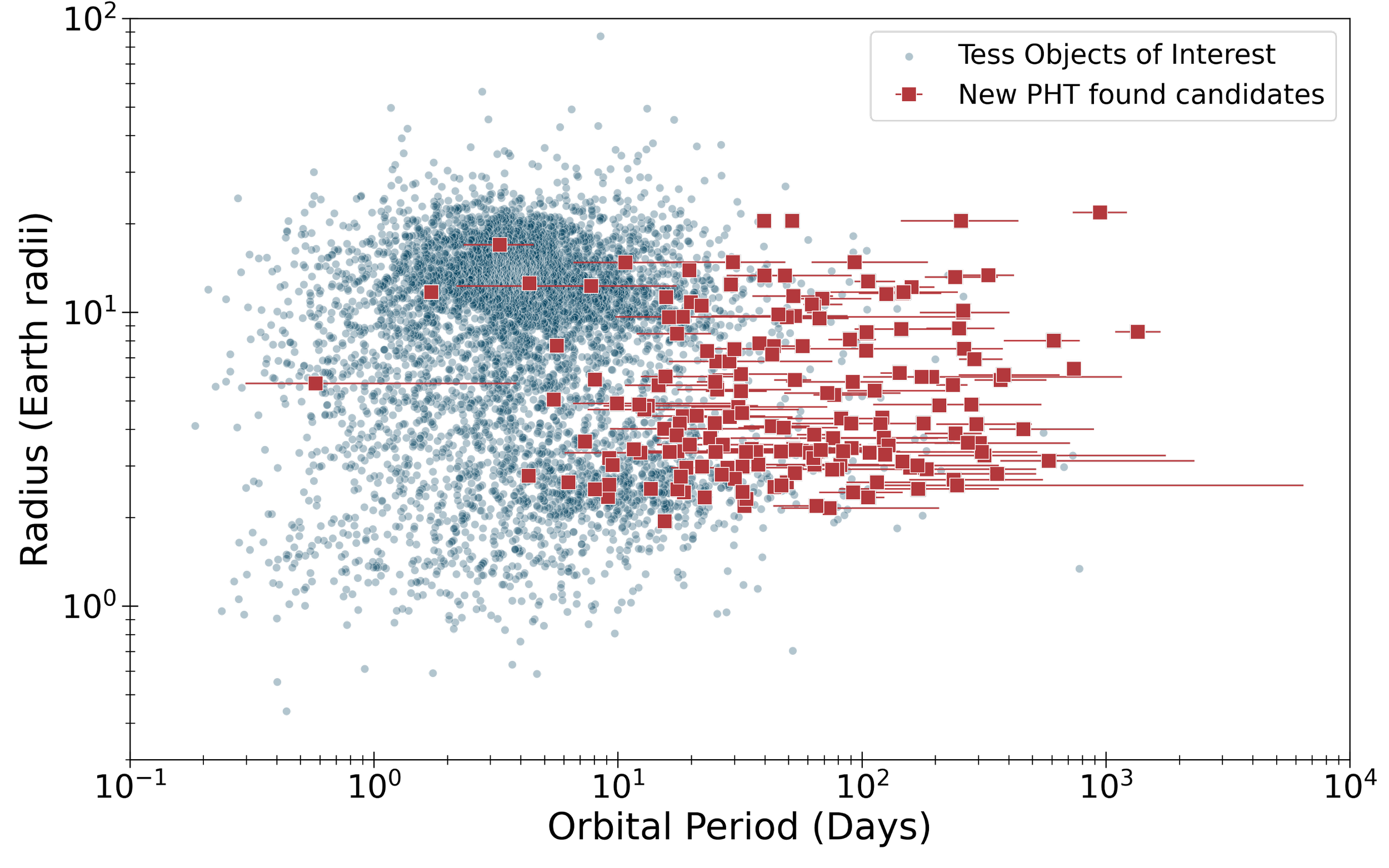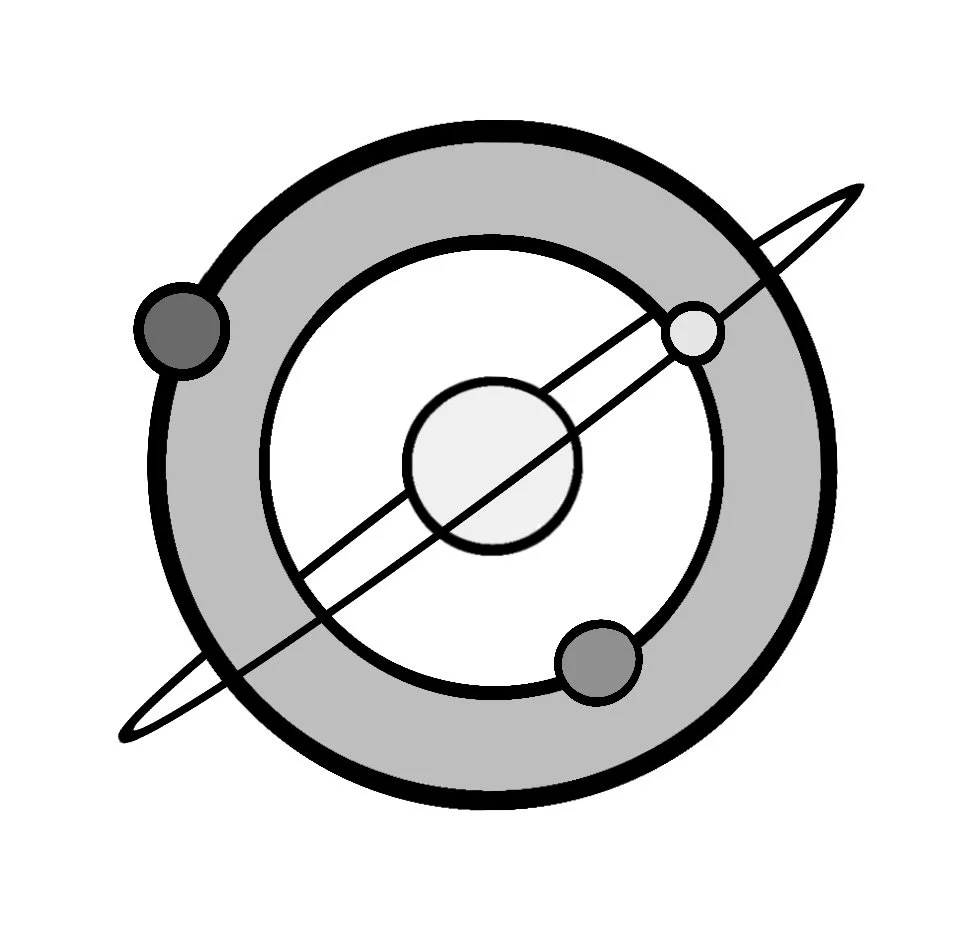Planet Hunters TESS
Science with the help of a global community.
Project Overview
Planet Hunters TESS is a citizen science project that involves volunteers in the search for exoplanets using data from NASA's Transiting Exoplanet Survey Satellite (TESS). TESS observes large portions of the sky, looking for temporary dips in the brightness of stars caused by orbiting planets passing in front of them, known as transits. To date, over 45,000 people have contributed to this global search for planets.
The project works by allowing volunteers to analyze light curves—graphs representing changes in star brightness over time—generated by TESS. Volunteers examine these light curves for patterns indicative of exoplanetary transits that may have been missed by automated algorithms.
This citizen science approach is highly beneficial because it harnesses the power of human pattern recognition and intuition, complementing automated detection methods. Volunteers can identify subtle signals that automated algorithms might overlook, such as faint or irregular transits, potentially leading to the discovery of new exoplanets or unusual planetary systems. In particular, this approach has proven to be highly valuable to identify planets with longer orbital periods, and therefore planets that are potentially more similar to the planets found in our own solar system.
Overall, Planet Hunters TESS engages the public in real scientific research, accelerates the pace of exoplanet discovery, and enhances our understanding of the diversity and distribution of planets beyond our solar system.
Figure showing the automated algorithm found planets (blue circles) and the citizen science found planets (red squares). It highlights the citizen science found planets live in a different region of parameter space (at longer orbital periods) compared to the planets found using traditional algorithms.
The growth of Planet Hunters TESS since the launch in December 2018.
Project Management
As the creator, architect, and manager of the Planet Hunters TESS project, I oversee and manage the day-to-day running of the project, as well as the scientific output. With a team of dedicated volunteers and scientists we have made significant contributions to the known population of longer-period exoplanets in our galaxy.
I am currently working on expanding and advancing this global project in a number of directions. First, we are launching a sister project to Planet Hunters TESS, known as Planet Hunters TESS Evolved, which addresses the scientific question of how planets and stars affect one another at later stages of their lives. Second, the Planet Hunters TESS team is working on optimizing the combination of human labels and machine learning via the use of Convolution Neural Networks and Active Learning.
I’m also a consultant for building and managing other citizen science projects, including for Planet Hunters NGTS and Black Hole Hunter.
Project testing and results
In the initial stages of designing the project, I developed a number of A/B test to determine the best interface design to optimize user experience and obtain the best results. For more information on these tests, see publication. Furthermore, following user feedback, we made a drastic change to the user interface after 6 months of the project - where the new interface allowed for more interaction with the data via a new zoom function.
To date, we have discovered almost 200 new planets, all of which were missed by automated planet detection searchers. As shown in the figure at the top of this page, our planets (shown by the red squares) populate a quantifiably different region of parameter space to the algorithm found planets (shown in blue). More specifically, our planets have systematically longer orbital periods and thus may be more similar to the planets found in our own solar system. Overall, we have shown that this novel method of using human vetting (combined with some machine learning) allows us to further our understanding of planets, planet formation and planet evolution.
Example planets found using citizen science.
Related publications
First Author
Eisner, N. L., Johnston, C., Toonen, S., Frost, A. J. et al. Planet Hunters TESS IV: A massive, compact hierarchical triple star system TIC 470710327. MNRAS, 511, 4710-4723, 2022.
Eisner, N. L., Nicholson, B., Barragán, O., Aigrain, S., Lintott, C., et al. Planet Hunters TESS III: Two transiting planets around the bright G dwarf HD 152843. MNRAS, 505(2), 1827-1840, 2021.
Eisner, N. L., Barragán, O., Lintott, C., Aigrain, S., Nicholson, B., et al. Planet Hunters TESS II: Findings from the first two years of TESS. MNRAS, 501(4), 4669, 2021.
Eisner, N.L., Lintott, C. and Aigrain, S. LATTE: Light Curve Analysis Tool for Transiting Exoplanet. JOSS, 5(49), 2020.
Eisner, N. L., Barragán, O., Aigrain, S., Lintott, C., Miller, G. et al. Planet Hunters TESS I: TOI 813, a subgiant hosting a transiting Saturn-sized planet on an 84-day orbit. MNRAS, 494(1), 750, 2020.
Eisner, N. L., Knight, M.M., Snodgrass, C., Kelley, M.S.K., Fitzsimmons, A., and Kokotanekova, R. Properties of the Bare Nucleus of Comet 96P/Machholz 1. AJ, 157(5), 186, 2019.
Eisner, N., Murray, A.L., Eisner, M. & Ribeaud, D. A practical guide to the analysis of non-response and attrition in longitudinal research using a real data example. International Journal of Behavioural Development. 43(1), 24, 2018.
Contributing Author
Mann, C.R., Lafrenière, D., Dragomir, D., Quinn, S.N., Tanetal (including Eisner, N. L.) Validation of TOI-1221b, awarm sub-Neptune exhibiting TTVs around a Sun-like star. ApJ, 165 217, 2023
Heitzmann, A., Zhou, G., Quinn, S. N., Huang, C. X., Dong, J., et al. (including Eisner, N. L.) TOI-4562 b: A highly eccentric temperate Jupiter analog orbiting a young field star. AJ, 165, 121, 2023
Malik, S., Eisner, N. L., Lintott, and C., Gal., Y. Discovering Long-period Exoplanets using Deep Learning with Citizen Science Labels. NeurIPS, in press.
Beck, P.G., Mathur, S., Hambleton, K., García, R.A., Steinwender, L., Eisner, N. L., et al., 99 new oscillating red-giant stars in binary systems with NASA TESS and NASA Kepler identified from the SB9-Catalogue. A&A, 667, A31, 2022.
Barragán, O., Armstrong, D. J., Gandolfi, D., Carleo, I., Vidotto, A. A., et al. (including Eisner, N. L.) The young HD 73583 (TOI-560) planetary system: Two 10-M⊕ mini-Neptunes transiting a 750-Myr-old, bright, and active K dwarf. MNRAS, 514(2), 1606, 2022.
Dalba, P. A., Kane, S. R, Dragomir, D. Villanueva Jr. S., Collins, K. A. et al. (including Eisner, N. L.) The TESS-Keck Survey. VIII. Confirmation of a Transiting Giant Planet on an Eccentric 261-day Orbit with the Automated Planet Finder Telescope. AJ, 163(2), 61, 2022.
Holt, C.E., Knight, M.M., Kelley, M.S., Ye,et al. (including Eisner, N. L..) .Surface properties of near-sun asteroids. The Planetary Science Journal, 3(8), 187, 2022.
Prsa, A., Kochoska, A., Conroy, K. E., Eisner, N. L. Hey, D.R. et al., TESS Eclipsing Binary Stars. I. Short cadence observations of 4584 eclipsing binaries in Sectors 1. ApJS, 258(1), 16, 2022.
Safron, E. J., Boyajian, T.S. and Eisner, N. L. The SATCHEL pipeline: A general tool for data classified through citizen science. MNRAS, 512(3), 3972, 2022.
Veselin K. B., Orosz, J. A., Feinstein, A. D., Welsh, W. F., Cukier, W., et al. (including Eisner, N. L.) TOI-1338: TESS’ First Transiting Circumbinary Planet. AJ, 159(6), 253, 2020.
Gilbert, E. A., Barclay, T., Schlieder, J. E., Quintana, E. V., Hord, B. J., et al. (including Eisner, N. L.) First Habitable Zone Earth-sized Planet from TESS. I: Validation of the TOI-700 System. AJ, 160(3), 116, 2020.
FAQs
-
Scientists from around the world have developed extremely efficient computer algorithms that will look for repeated signals in TESS's lightcurves. Such techniques have already proven to be extremely efficient at finding planets, however there is only so much that a machine can do. Planetary systems are highly complex, and their lightcurves are never quite the same. This, combined with the variability of the stars, can confuse our computer algorithms, yielding wrong results or missing planetary systems entirely. Human brains, however, are excellent at detecting patterns that automated routines may miss, and that is why we need the help of citizen science.
-
To date, over 45,000 citizen scientists have taken part I the project from over 90 different counties.
-
We have detected almost 200 planet candidates, all of which were missed by other automated searches.



